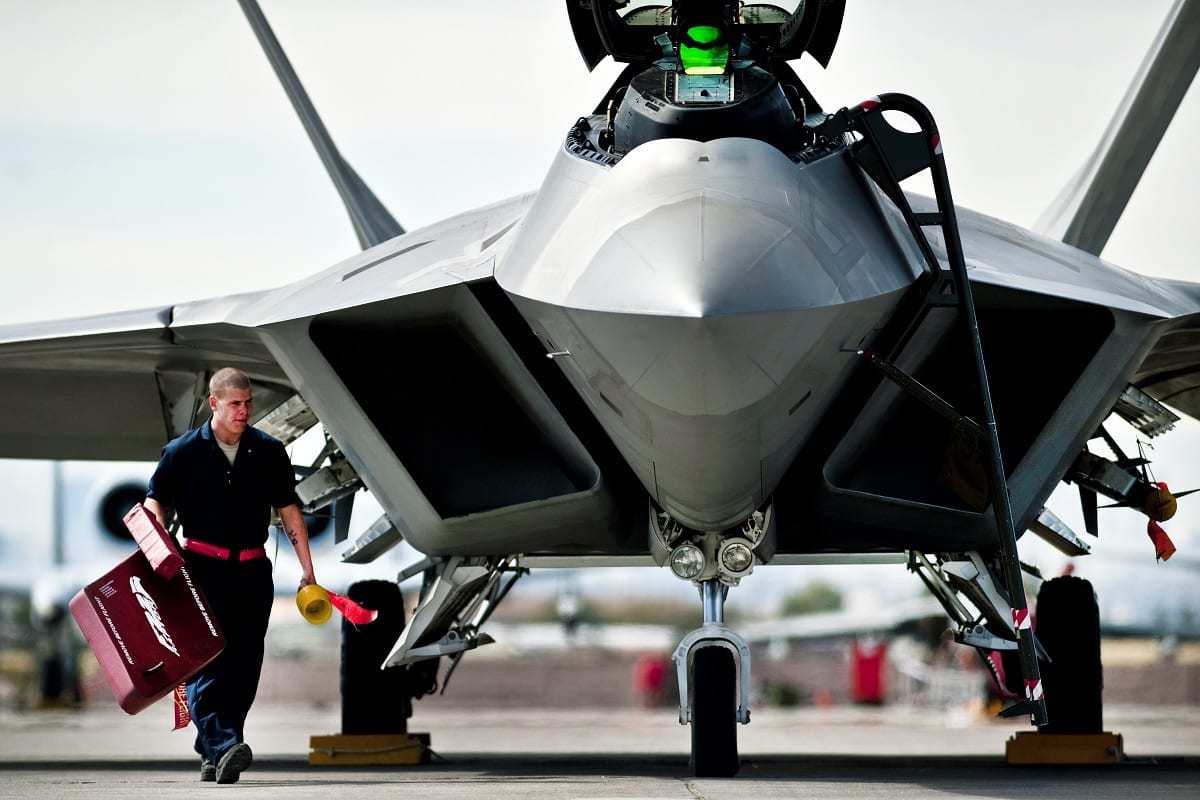The U.S. military spent years and trillions of dollars developing and testing its various types of stealth aircraft, military hardware that truly make America a superpower.
Nonetheless, Russia has made claims that its Nebo-M radar system can detect advanced aircraft even including Lockheed Martin’s F-22 Raptor and F-35 Lightning II.
This isn’t the first time such bold claims have been made, but officials at the state-owned JSC Concern VKO “Almaz-Antey” have said stealth technologies pose no problem for this new platform.
“The Nebo-M radar is the menace of stealth technologies. It can see F-22, F-35 and so on perfectly well,” Almaz-Antey Director General Yan Novikov said during the New Knowledge educational marathon on Saturday, according to a report from Tass.
Novikov added that his company, which is a chief developer and maker of Russian aerospace defense systems, pays serious attention to various radar projects and technologies.
“The Concern produces more than 30 types of mobile multi-functional radar systems,” explained Novikov.
Tass reported that the Nebo-M and Container radars are the backbone of the total radar field along the Russian ground border. These latest radar platforms have been supplied to the units deployed in the “most dangerous directions.”
The first serial Nebo-M system was delivered to the Western Military District in 2017, and it was later supplied to regiments in Transbaikalia, Khabarovsk, and Primorye regions. The radar platform was also delivered to Crimean air defense in 2018.
The 55ZH6M Mobile Nebo-M, which is based on the Nebo family of Very High Frequency (VHF) 2D and 3D mobile air surveillance radar systems, which features Active Electronically Scanned Array (AESA) technology. The Nebo-M also includes radars that operate in the L-band and X-band.
Development of the platform began in 2008 and it was first demonstrated in October 2011, while initial operational capability was achieved in February 2015. Russia has claimed that the system can detect air and hypersonic targets at 600 km, twice the range of previous generations. It also has a strong jamming protection, which can remain operational even if its radar systems get knocked out.
The Nebo-M platform consists of three trucks that can carry a “giant, swimming pool-sized antenna,” along with a smaller antenna and a command post module, according to MilitaryLeak.com. The platform can scan airspace at a range of 1,800 km and an altitude of 1,200 km.
The truck-based system can be rapidly redeployed by land or airlifters, and it reportedly takes just fifteen minutes to deploy.
Nebo-M can detect aircraft and ballistic missiles at a distance of one thousand kilometers. Air and hypersonic targets are detected at 600 km which is twice above the range of previous generations. Stealth technologies pose no problem for the new radars.
Besides Nebo-M, stationary over-the-horizon Container (29B6) radars also watch combat aviation close to Russian borders, Tass reported. The Container radars can detect targets at a distance of 2000 km.
Peter Suciu is a Michigan-based writer who has contributed to more than four dozen magazines, newspapers and websites. He regularly writes about military small arms, and is the author of several books on military headgear including A Gallery of Military Headdress, which is available on Amazon.com.

